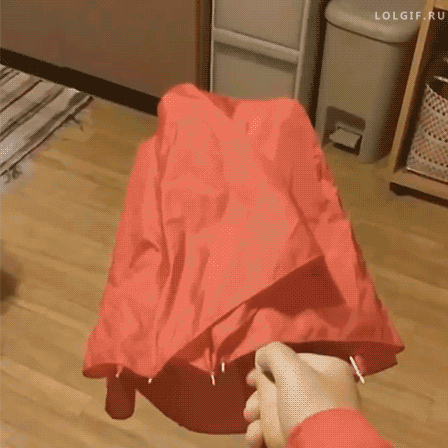The Long Road to Long-Term Goals
If there is one thing you can learn from creative writing school, it is that you have to give your characters at least three good reasons before they should consider doing anything.
KDE Promo contributors recently completed drafting and editing a document that lays out the long-term goals for the Promo workgroup. This has proven a complex and tedious task, but we were compelled because we had those three good reasons:
- Having long-term goals laid out in front of us gives a clear direction in which to work.
- Concrete goals also help us differentiate between what is important and what is secondary; between what we can do with the resources we have, and what we may have to put on hold or even forget about completely.
- Goals help clarify to others why we do what we do. When our peers understand what we intend to achieve, it saves time because we don’t have to lay out every step of every process every single time to justify your actions.

But… what does “Long Term” mean to you?
After several back-and-forths on Phabricator, we ended up defining “long term” as “5 years”. We have also associated concrete numbers with each goal, things like “Promo intends to help increase the number of desktop end users by 2% over the next 5 years“, to provide specific baseline for each overarching action. This will help us assess the degree of success for each goal…
…or adjust our expectations to reality the next time we have to write something similar. Many of the numbers in the goals are dictated solely by what we currently feel is right. Since many of the goals have never been attempted, we can only speculate as to what they will take. Many of the baselines will probably have to change over time as we get more data that helps us make more realistic predictions.
How are you going to do it?
When you read through the list, you will see a pattern emerge: there is a lot of going to events, hoping to talk to head-honchos, sending emails into the void, getting in touch with people we have never met; lots of knocking on doors not knowing if we will have them slammed back in our faces.

Achieving goals through these means may sound like taking very long shots, but we do have a massive community on our side. For one, there’s the fact that, despite some exaggerated reports to the contrary, KDE is a force to be considered. I would not say that claiming you come on behalf of KDE will open every door, but it has helped us in the past, even when cold-calling, and it will continue to help us in the future.
Then there is the the friend-of-a-friend resource: in a community as large and with members in such far-flung places, from Korea to Kentucky, and from Norway to Nigeria, we want to be able to use members of our community as ambassadors to our cause. Thanks to our community, there will always be somebody who knows someone who can get us into meetings with the people we need to talk to.
And who are these people? Well, they are those who can help us reach ever larger audiences, while at the same time consolidating and helping us grow our community. We are talking about journalists, “influencers” (yes, I hate that word too), bloggers, vloggers, podcasters and so on. We also want to talk to businesses that may benefit from developing with our tools and frameworks.
The idea is to gradually expand our area of influence among users and companies beyond those that are already convinced of KDE’s virtues, even beyond those that are diehard Free software advocates and users. We want to reach more mainstream users, users and developers that may not even have heard of KDE.
 This is where you can help: if you know a “celebrity”, influencer, or talented writer, a Youtuber, blogger, or good podcaster – introduce us! We want as much coverage as we can decently get, and content creators are often looking for topics they can talk about. We may be able to provide them with some juicy stories and get the word out to people we otherwise wouldn’t be able to reach. The same goes for journalists in mainstream or specialised publications, politicians, and decisions-makers in companies big, medium or small.
This is where you can help: if you know a “celebrity”, influencer, or talented writer, a Youtuber, blogger, or good podcaster – introduce us! We want as much coverage as we can decently get, and content creators are often looking for topics they can talk about. We may be able to provide them with some juicy stories and get the word out to people we otherwise wouldn’t be able to reach. The same goes for journalists in mainstream or specialised publications, politicians, and decisions-makers in companies big, medium or small.
It may seem like the number of things we can do (tweeting, going to events, putting out press releases and blog posts, contacting journalists, talking to managers) is limited and very unexciting. This is true: there are no clever shortcuts or breakthrough techniques you can apply here. However, the fun is in the twists and turns you apply to these things.
You may have noticed we always try to a post an attractive picture with everything we send on to social media or publish on the Dot. We make meme jokes, jump on trending bandwagons, and often ask members from other workgroups and projects to let us look at what they want to submit to social media so we can give it a whirl. We believe you can always write and engineer a message in a way it can entice more people.
This sounds terribly conceited. How do you know you are right about this?
TL;DR: We don’t.
It is always hard to prove anything we do has a positive effect on KDE’s popularity and adoption. It stands to reason it be so, but there is no hard way to say for sure. The only thing we can do is look at the numbers over time and try to discover a correlation between actions and effects.
We monitor most social media platforms, regularly taking data from LinkedIn, Twitter, Mastodon, Facebook and so on. We also monitor Debian’s popcons (popularity contests) every week and store all the data in a folder on share.kde.org.
 This is where you can help: a lot of the data collection and processing is done by hand. There are services that could help us, but very often they are proprietary, tie us to their online storage services, and/or don’t cover all the bases, leaving out things like Mastodon, PeerTube or Diaspora.
This is where you can help: a lot of the data collection and processing is done by hand. There are services that could help us, but very often they are proprietary, tie us to their online storage services, and/or don’t cover all the bases, leaving out things like Mastodon, PeerTube or Diaspora.
We are also aware of how inadequate the sources we mine are. We really don’t have a good way of knowing, for example, how many times KDE software gets installed in distributions, so it is nearly impossible to figure out how many silent users are out there.
Point us to solutions and tell us about sources we can mine. This helps us get a better idea of how things are going for us on a global scale. It will also contribute to figuring out if what we are doing is helping or not.
We also need to know where we stand within our own community. Because of this, we are creating a survey that will help us understand better who our peers are. While the survey may confirm things we already suspect, it will also tell us about the big absences.
A good way to grow a community is by looking further afield, into audiences different from what we already have. As different people respond to different things, knowing who we are missing can help us shape activities to attract them.
 This is where you can help: please answer our surveys! All information is anonymised and you obviously can ignore questions that you don’t want to answer. But even incomplete information will help us learn what sort of people we click with, and put us on the road to answering the question of why some people just don’t get bitten by the KDE bu–… er… dragon.
This is where you can help: please answer our surveys! All information is anonymised and you obviously can ignore questions that you don’t want to answer. But even incomplete information will help us learn what sort of people we click with, and put us on the road to answering the question of why some people just don’t get bitten by the KDE bu–… er… dragon.
Notwithstanding, market research is far from a hard science, and it is frustrating not being able to confirm without a shadow of a doubt that we are doing a good job.
That must be annoying…
Talking of annoying, it is important to remember that most things in business fall through. Most meetings lead to nothing, most agreements end up producing nothing useful, most promises are broken. This is not because businesspeople are unreliable. The problem is priorities shift, other more urgent or more auspicious things pop up, and businesspeople are obliged to implement a better strategy for their companies if the opportunity arises, even if it means ditching an agreement with certain Free software communities.

But even a 90% failure rate is nothing to be disillusioned about. Quite the contrary: if you give up after a couple of let-downs, you are guaranteed not to succeed ever. Promo casts its nets wide and latches onto as many plausible-sounding agreements it can. We try to follow through until it is either clear it is going nowhere, it is not going to work in our favour, or it is no longer our business and we need to pass it on to someone who can sign on the dotted line — Promo does not have a say in the conditions of final agreements.
In fact, Promo has very little say in anything. If you read through the list of goals and how we intend to carry them out, it should be clear that Promo doesn’t dictate or even want to dictate what the rest of the community should do. We won’t even tell you to re-design your project’s website to make it more attractive and useful to your visitors. We will probably tell you that you _should_ re-design your site, and even help you do it, but we won’t tell you you have to.
We work with the things we have. We try to tell the rest of the world how KDE and our projects are attractive. We try and improve our hand by advising on wording in announcements, layouts on web pages, and communication at events. In short, we aspire to be the community’s PR firm.
 This where you can help… Or, more precisely: we can help you. Come and visit us in our IRC channel, Telegram group or mailing list, and we can start working together to improve your online presence, get your project into the media, and grow your userbase.
This where you can help… Or, more precisely: we can help you. Come and visit us in our IRC channel, Telegram group or mailing list, and we can start working together to improve your online presence, get your project into the media, and grow your userbase.
We are already working consistently with Krita, Kdenlive, Atelier, Kontact, Plasma, Plasma Mobile and many others. As it is difficult to keep track of all the projects within KDE and the people behind them (this community is big), we often need you to come and tell us.
The point is, we are here for you… even if we don’t know who you are yet!
So the best way to get a handle on Promo is to read through the goals. And if things are still not clear or you need more details, come and talk to us. We at KDE Promo are a welcoming lot!
